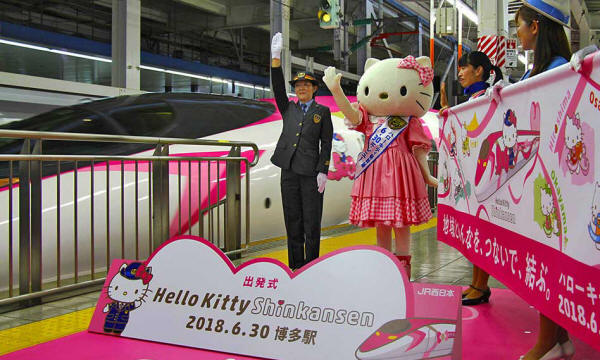|
Photo by Kyodo News/Getty
The craze for all things cute is motivated, most obviously, by the urge to escape from precisely such a threatening world into a garden of innocence in which childlike qualities arouse deliciously protective feelings, and bestow contentment and solace.
Cute cues include
behaviors that appear helpless, harmless, charming and yielding, and
anatomical features such as outsize heads, protruding foreheads,
saucer-like eyes, retreating chins and clumsy gaits.
According to Lorenz, the
same visual cues can arouse us to equally intense - or possibly more
intense - caregiving when we encounter them in exaggerated and
distilled form in animals, such as birds and puppies, and even in
dummy models, such as dolls and teddy bears.
But if cuteness were merely about the charming, innocent and unthreatening, or if our attraction to it were motivated just by protective instincts, or the search for infantile and reassuring distractions from the anxieties of today's world, it wouldn't be so ubiquitous.
Those qualities speak only of what we might call the 'sweet' end of a whole spectrum of cuteness.
As we move toward the 'uncanny' end, sweet qualities get distorted into something darker, more indeterminate and more wounded.
Something like Jeff Koons's Balloon Dog series (1994-2000), which seems at once powerful (made of stainless steel) and powerless (hollow and lacking a face, mouth or eyes).
It is hulking yet
vulnerable-seeming, familiar and also unfamiliar, reassuringly
innocent and also unsafe, defective, knowing. It both comforts us in
a world of unnerving uncertainty - and gives voice to that same
world, but crucially in a lighthearted register.
In the ever-changing styles and objects that exemplify it, it is nothing if not transient, and it lacks any claim to lasting significance.
Plus it exploits the way that indeterminacy, when pressed beyond a certain point, becomes menacing - which is a reality that cute is able to render beguiling precisely because it does so trivially, charmingly, unmenacingly.
Cute expresses an intuition that life has no firm foundations, no enduring, stable 'being', and that, as the philosopher Martin Heidegger intimated, the only ground for life lies in the acceptance of its ungroundedness.
And it often does so with
something like the 'artifice and exaggeration', expressed in a
manner that 'dethrones the serious' or fails in its seriousness,
that the cultural critic Susan Sontag
attributed to camp.
It is reflected, too, in their frequent blending of human and nonhuman forms, as in the cat-girl Hello Kitty. And in their often undefinable age.
For though cute objects
might appear childlike, it can be strikingly hard to say, as with
ET, whether they are young or old - sometimes seeming to be, in
human terms, both.
...and even good and
bad dichotomies, that once structured
ideals but that are now taken to be more fluid or porous.
Cute has nothing to do with showing inwardness...
In its more uncanny forms, at least, it
steps entirely aside from our prevailing faith that we can know -
and control - when we are being sincere and authentic.
For this reason, cute is one - perhaps very trivial, very tentative - way of exploring whether and how the paradigm of power can be exited.
Indeed, this might
explain why cute has stormed popular culture in those parts of the
world - notably the U.S., Europe and above all Japan - that since the
Second World War have sought, intermittently and with many setbacks,
to reduce the role of power in determining the structure of human
relations and, most conspicuously, of international relations...
|


